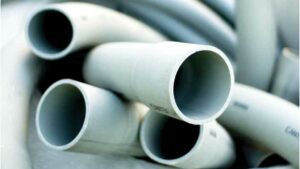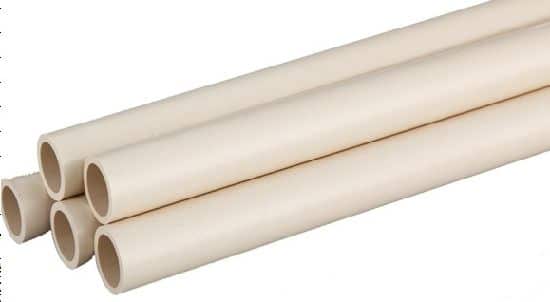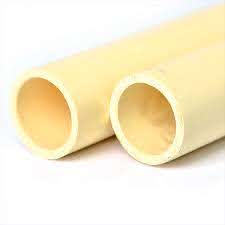If you’re familiar with PVC plastic, you might have come across its close relative – CPVC. A rising star in the world of plastics, CPVC shares many characteristics with PVC, but it also boasts distinct features that make it stand apart. So, if you’re intrigued about the differences between these two, let’s delve deeper!
PVC – The Ubiquitous Plastic

Polyvinyl chloride, or PVC, holds the third spot among the most used plastics globally. You’re likely to encounter this white plastic in everyday household items, thanks to its durability and odorless properties.

PVC primarily serves as a fundamental material for home plumbing systems, but its versatility extends to various industrial and commercial applications. A standout quality of PVC is its independence from fossil fuels for production. Plus, it’s highly adaptable and recyclable, making it a green solution in diverse scenarios.
This plastic variant can withstand interaction with chemicals that might compromise other alternatives. However, PVC has raised eyebrows due to its substantial chlorine, carbon, and salt content, amounting to 57%. Despite this, no definitive evidence indicates harmful effects on home environments.
PVC pipes have been increasingly substituting traditional metal pipes, as the latter can corrode and contaminate drinking water, leading to high maintenance hassles.
One variant of PVC, taking the spotlight today, is CPVC.
CPVC – The Enhanced PVC

Chlorinated polyvinyl chloride, or CPVC, is a spin-off of PVC, characterized by a heightened chlorine content. While commercial PVCs typically comprise 63% to 69% chlorine, CPVC can hold up to 74%.
The increased chlorine content enhances the plastic’s durability and rigidity, especially in high-temperature conditions. This makes CPVC a popular choice for ductwork and hot water piping. It also finds application in industrial mixtures, albeit at a higher cost due to its extensive processing requirements.
However, the initial price tag of CPVC pays off in the long run through cost-effective benefits.
Making the Right Choice – PVC or CPVC
The primary differentiating factor between PVC and CPVC is their temperature tolerance. A PVC pipe can withstand temperatures up to 140°F, while CPVC can hold up to 200°F.
Consequently, for hot water piping, CPVC is the go-to choice. PVC remains the preferred material for cold water and waste pipes due to its cost-effectiveness. Both types of pipes also serve as alternatives to copper pipes, coming in nominal pipe size (NPS) variants.
Furthermore, while both PVC and CPVC share similar compositions, their differing chlorine content means that they resist chemicals differently. This necessitates the consultation of a chemical compatibility chart before use.
To Glue or Not to Glue – PVC and CPVC
Although it’s possible to glue PVC and CPVC together, this might compromise the system’s integrity due to their different pressure and temperature ratings, potentially leading to leaks and other issues.
Versatile CPVC Fittings
CPVC’s versatility extends to various fittings, making it suitable for multiple configurations. Some of these fittings include:
- CPVC elbows: 45 degrees, 45 degrees CTS, 90 degrees, 90 degrees CTS, Reducing 90 degrees, Female elbow in 90 degrees, Female reducing elbow in 90 degrees.
- CPVC T-joints: Tee, Reducing tee, Female reducing tee, CTS tee, Cross tee.
- CPVC adaptors: Male adaptor, Female adaptor, CTS male adaptor, CTS female adaptor, Reducing male adaptor, Reducing female adaptor.
- Other CPVC connectors: Ball valve, Cap, CTS cap, Coupler, CTS coupler, Reducing coupler, End cap, End plug, threaded, Hex head plug, Reducing bushing, CTS reducing bushing, Step over the bend, Tank connector, Union, CTS union.
Concluding Thoughts
With this comprehensive comparison, you now have the knowledge to make informed decisions between PVC and CPVC based on your specific needs. While PVC is your practical choice for durability and odorless properties, CPVC steps up to the plate when high temperature and enhanced durability are required. Choose wisely and make your plastic selection count!

Jay
Jay is a health and wellness enthusiast with expertise in water quality and nutrition. As a knowledgeable advocate for holistic well-being, Jay successfully manages Type 2 Diabetes through informed lifestyle choices. Committed to sharing reliable and authoritative insights, Jay combines firsthand experience with a passion for enhancing health."

